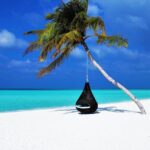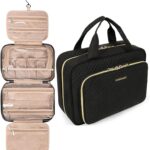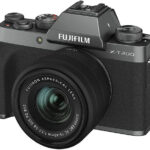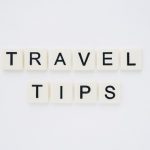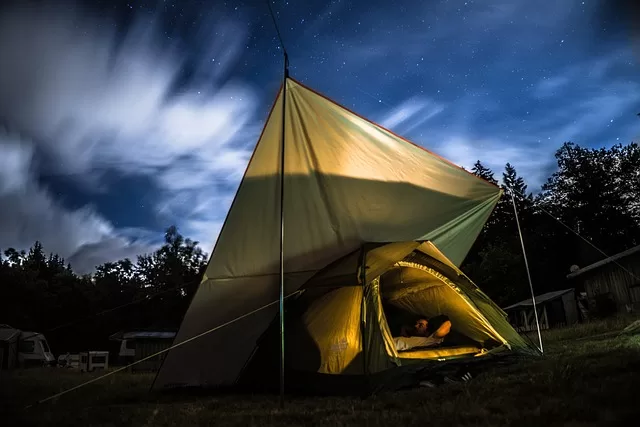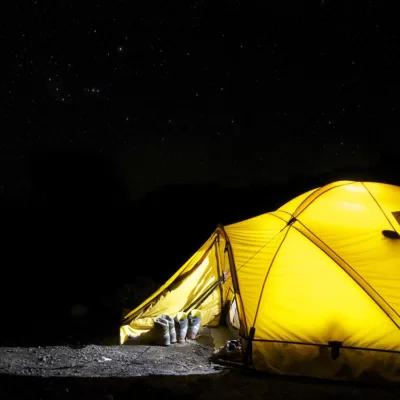Outdoor enthusiasts have always enjoyed activities like camping and fishing. Every year, millions of people are drawn to the outdoors by its simplicity, peace, and the excitement of fishing. Few experiences can compare to a camping trip where you may fish to your heart’s content for individuals who love both camping and fishing.
Let’s explore the best campsites for fishing so you can start planning your camping trip already. These places have plenty to offer everyone, whether you’re a seasoned angler or just getting started. Everything will be covered, from breathtaking landscapes to a variety of fish populations. So you may as well pack up your camping gear and equipment, and get ready to have the best outdoor experience fishing in one of the most scenic campsites for fishing on your next vacation!
Factors to Consider When Choosing a Fishing Spot Camping
If you’re planning a fishing and camping trip, it is best to choose the right destination to make the most of your trip. Some of the factors to consider when making a choice include location, accessibility, type of fish, time of year, weather conditions, available amenities, and regulations. Take these factors to account and be sure to increase your chances of having a great time on your next camping and fishing adventure.
Location
The location of your campsite should be close to the fishing spot. This will save you time and energy while carrying your gear back and forth. If you’re planning to fish in a river, look for a campsite that’s located upstream or downstream of the spot you plan to fish. This will ensure that you have easy access to the water.
Water Temperature
Different species of fish prefer different water temperatures. Before you choose a fishing spot, research the preferred water temperature of the fish you plan to catch. This will help you narrow down your search and increase your chances of success.
Fish Species
Research the type of fish that are native to the area you plan to camp and fish in. This will help you choose the right bait and equipment for your trip. If you’re not sure what fish species are in the area, ask the locals or a park ranger for advice.
Fishing Techniques
Before choosing a fishing spot, research the types of fish that are present in the area and the fishing techniques that are best suited for catching them. Some fish are more easily caught using specific types of bait, lures, or fishing methods. For example, trout may be more likely to bite on flies, while catfish are more likely to bite on live bait. Understanding the types of fish and their preferred fishing techniques can help you select the appropriate equipment and increase your chances of catching a fish.
Water Depth
The depth of the water can affect the types of fish that are present in the area. For example, shallow waters are ideal for catching smallmouth bass, while deeper waters are better for catching catfish or lake trout. Before choosing a fishing spot, research the water depth and the fish species that inhabit those depths.
Weather Conditions
The weather can have a significant impact on your fishing trip. Consider the weather conditions, such as wind, rain, or heat, and how they might affect the fish’s behavior. For example, a sunny day might be perfect for catching trout, while a cloudy day might be better for catching bass.
Accessibility and Amenities
Consider how easy it is to access the fishing spot from your campsite. Are there any obstacles, such as steep cliffs or dense forests, that could make it difficult to reach the water? If you have limited mobility, look for a fishing spot that’s easily accessible and has level terrain. When selecting a fishing spot, consider the accessibility of the location and the amenities available nearby. If you plan to camp, ensure that the location is easily accessible and offers adequate parking space for your vehicle. Additionally, check whether the location offers amenities such as restrooms, picnic tables, and fire pits. These amenities can make your camping trip more comfortable and enjoyable.
Regulations
Be aware of any fishing regulations in the area you plan to camp and fish in. Some areas may have fishing restrictions, such as catch limits or fishing seasons. Make sure you’re aware of these regulations before you start fishing to avoid any fines or legal issues.
Top 7 Campsites for Fishing
It can be hard to choose the best campsite for your fishing and camping trip with the availability of so many campsites for fishing. On that note, through research and personal experience, I have compiled this list of the top campsites that you should consider when going on a fishing and camping trip.
Lake Texoma, Oklahoma
The location of Lake Texoma is pretty cool. It’s actually located on the border between Oklahoma and Texas, which makes it unique. The lake itself is massive, covering over 89,000 acres, and it’s a man-made lake created by the Denison Dam on the Red River.
Types of Fish Available
So here is the real reason people come to Lake Texoma – the fishing! There are tons of different types of fish available to catch, and you can say it’s a pretty diverse selection, right? Some of the fish available include
- Striped bass
- Largemouth bass
- Smallmouth bass
- White bass
- Channel catfish
- Blue catfish
- Lathead catfish.
Best Techniques and Fishing Gear
Now, if you’re looking to catch striped bass specifically, the best time to go is during the spring and fall when they’re most active. And if you’re wondering what kind of gear to bring, you’ll want to bring the medium to heavy spinning or baitcasting rods and reels. A braided line is recommended for fishing for striped bass since they’re so powerful.
Campsite Amenities
As for the campsite amenities, there are plenty of options available. Eisenhower State Park is a popular choice, with over 140 campsites that have water and electric hookups, showers, and restrooms. Or if you’re looking for something a little more luxurious, the Lake Texoma RV Resort has full hookups, laundry facilities, and even a swimming pool.
Other Camping Activities Available
And there are many other things to do when camping alone at Lake Texoma than just fishing! You can also go hiking, boating, and swimming. Or, if you want some extra help catching fish, you can hire one of the lake’s fishing guides or charters.
Kenai River, Alaska
The Kenai River is one of the top campsites for fishing that every angler should plan to visit. Located on the Kenai Peninsula in southern Alaska and it’s a popular spot for fishing enthusiasts. The river is over 80 miles long and is fed by glaciers, making the water crystal clear and ideal for fishing. With its beautiful scenery and abundance of fish, it’s the perfect spot for a fishing and camping adventure for any serious angler.
Types of Fish Available
So, what kind of fish can you catch at the Kenai River? The river is particularly famous for its salmon runs, which attract anglers from all over the world. However, there are several types of fish available, including
- Chinook salmon
- Coho salmon
- Sockeye salmon
- Pink salmon
- Rainbow trout.
Best Techniques and Gear
If you’re looking to catch salmon, the best time to visit is during the summer months, with July and August being the peak months for salmon fishing. As for gear, you’ll want to bring a medium to heavy rod and reel with a sturdy line. Depending on the type of salmon you’re after, you may want to use lures, bait, or flies.
Campsite Amenities
Several campsites along the river offer amenities such as restrooms, showers, and picnic areas. The Kenai Riverfront Resort is a popular choice, with both RV and tent sites available, as well as cabins for rent.
Other Activities Available
There are other thrilling things to do while camping at the Lake. So if you want to take a break from fishing, you can also go hiking, kayaking, or wildlife watching in the surrounding area.
Lake Fork, Texas
When thinking of the best campsites for fishing, Lake Fork is one of the destinations to come to mind. It is located in northeastern Texas and is one of the premier fishing destinations in the state. The lake covers over 27,000 acres and is known for its clear water and abundant fish population.
Types of Fish Available
So, what kind of fish can you catch at Lake Fork? Well, the lake is famous for its trophy-sized largemouth bass, but you can also catch other types of fish such as
- Catfish
- Crappie
- Sunfish.
Best Fishing Techniques and Gear
If you’re after largemouth bass, the best time to visit is during the spring and fall months. During the spring, the bass is spawning and can be caught with techniques such as flipping and pitching, while during the fall, they are feeding heavily in preparation for the winter and can be caught using topwater lures. As for gear, a medium-heavy to heavy rod and reel with a strong line is recommended for catching trophy-sized bass.
Campsite Amenities
There are several campsites located around the lake, including Lake Fork Marina and Motel, which offers both RV and tent sites, as well as cabins for rent. The campsite has amenities such as restrooms, showers, and a boat ramp, making it easy to launch your boat and start fishing.
Other Camping Activities
In addition to fishing, there are also other activities to enjoy around Lake Fork, such as hiking, birdwatching, and golfing. And if you’re in the mood for some good food, there are several restaurants in the nearby town of Emory, including the famous Four Winds Steakhouse.
Klamath River, California
The Klamath River is located in northern California and is a popular spot for fishing enthusiasts. The river stretches for over 250 miles and flows through the Klamath Mountains, making for some stunning scenery.
What kind of fish can be found in the Klamath River? Well, there are several types of fish available, including
- Steelhead
- Salmon
- Rainbow trout
- Brown trout
- Smallmouth bass.
Best Fishing Techniques and Gear
If you’re looking to catch steelhead, the best time to visit is during the fall and winter months, while the best time to catch salmon is during the late summer and fall. This makes this campsite not just one of the best campsites for fishing but one of the most suitable campsites for fall foliage, where you enjoy the scenic landscape while also enjoying a fishing adventure, you may as well go on a winter camping as it is also a suitable campsite for winter fishing and camping trip.
As for gear, a medium to heavy rod and reel with a strong line is recommended, as the river can be fast-moving and the fish can put up a strong fight.
Campsites and Amenities
There are several campsites located along the river, including the Klamath River RV Park, which offers both RV and tent sites, as well as cabins for rent. The campsite has amenities such as restrooms, showers, and a boat ramp, making it easy to launch your boat and start fishing.
Other Available Activities
Asides from fishing, there are also other things to do when camping with friends around the Klamath River, such as hiking, kayaking, and birdwatching. And if you’re in the mood for some good food, there are several restaurants in the nearby town of Klamath, including the famous Steelhead Lodge.
Bighorn River, Montana
The Bighorn River is a world-renowned fishing destination located in the state of Montana, USA. It runs for 156 miles, originating in the Bighorn Mountains and flowing through the Bighorn Canyon National Recreation Area before eventually emptying into the Yellowstone River. It’s known for its crystal clear waters, consistent flows, and diverse aquatic insect life, making it a prime habitat for trout. The Bighorn River is definitely worth a visit for any fishing enthusiast looking for the best campsites for fishing.
Types of Fish Available
The Bighorn River is home to a variety of fish species, including rainbow trout, brown trout, cutthroat trout, and mountain whitefish. The river is most famous for its rainbow trout, which are known for their large size and feisty fight. Brown trout can also be found in the Bighorn River, and they can grow to be even larger than rainbow trout. The river’s cutthroat trout population is less significant, but anglers may still find some of these fish in certain sections of the river.
Best Fishing Technique and Gear
When it comes to the best fishing techniques and gear for the Bighorn River, it’s important to keep in mind the season and the time of day. Generally, the most effective methods include nymphing, dry fly fishing, and streamer fishing. Anglers typically use a 9-foot 5-weight or 6-weight fly rod, along with a floating line, sinking line, or intermediate line, depending on the water depth and conditions. Some popular fly patterns on the Bighorn River include pheasant tails, zebra midges, RS2s, and woolly buggers.
Campsite Amenities
In terms of camping amenities, there are several excellent campsites located along the Bighorn River. One of the most popular options is the Bighorn Canyon National Recreation Area, which offers several campgrounds with a variety of facilities, including showers, restrooms, and fire pits. Other nearby campsites include Afterbay Campground and 3 Mile Fishing Access, both of which offer dispersed camping opportunities. These campsites are managed by the Bureau of Land Management and do not have any facilities provided, so campers will need to bring their own camping gear and equipment including water and a portable toilet.
White River, Arkansas
The White River is a beautiful and scenic river that runs through the Ozark Mountains in northern Arkansas. It is one of the most amazing campsites for fishing, famous for its crystal-clear water, excellent fishing, and breathtaking scenery.
Types of Fish Available
The White River is a tailwater fishery that’s created by the release of water from the Bull Shoals Dam. This means that the water temperatures remain cool and consistent year-round, providing a perfect habitat for trout. The river is home to rainbow, brown, and cutthroat trout, and it’s not uncommon to catch fish that weigh up to 20 pounds.
Best Fishing Techniques and Gear
When it comes to fishing techniques and gear, there are a few things you need to keep in mind. The most popular fishing method on the White River is fly fishing, but you can also use spinning gear. The best time to fish is during the spring and fall when the water temperatures are cooler and the fish are more active. Some of the best fly patterns for the White River include woolly buggers, sculpin patterns, and midges. When it comes to gear, you’ll need a 9-foot 5 or 6-weight fly rod, along with a floating line, sinking line, or intermediate line depending on the water depth and conditions.
Campsite Amenities
The White River is surrounded by beautiful scenery, and there are plenty of campsites that offer easy access to the river. The most popular campsites include the Wildcat Shoals Resort, White Hole Resort, and Rim Shoals Resort. These campsites offer a range of amenities, including showers, restrooms, and fire pits. There are also several public campgrounds located along the river that offer more rustic camping experiences.
Other Available Activities
If you’re looking for other outdoor activities besides fishing, there are plenty of options in the area. You can go hiking or mountain biking on one of the many trails in the Ozark Mountains, or you can take a scenic drive along the Ozark National Forest Scenic Byway. You may as well pack up some camping games and bring them along for extra leisure.
Lake of the Woods, Minnesota
Lake of the Woods in Minnesota is definitely one of the most fantastic campsites for fishing! This massive lake is located in the northern part of the state and is known for its exceptional fishing and stunning scenery.
Types of Fish Available
Lake of the Woods is a massive body of water that spans the border between Minnesota and Canada, and it’s home to an impressive variety of fish. Some of the most popular fish species include walleye, northern pike, musky, smallmouth bass, and sturgeon. Whether you’re a seasoned angler or a beginner, you’re sure to have a blast fishing here.
Best Fishing Technique and Gear
When it comes to fishing techniques and gear, several methods work well on Lake of the Woods. Jigging and trolling are both popular methods for catching walleye, and you’ll want to use a medium-heavy rod with fast action. For northern pike and musky, you can use spinnerbaits or jerk baits, and a heavy action rod is recommended. If you’re looking to catch smallmouth bass, try using topwater lures or jigs with soft plastic trailers. And if you’re looking to catch sturgeon, you’ll need heavy gear with a lot of power and a sturdy leader.
Campsite Amenities
Lake of the Woods offers a wide range of camping options, from rustic campsites to luxury resorts. Some of the most popular campsites include the Angle Outpost Resort, Zippel Bay State Park, and Arnesen’s Rocky Point Resort. These campsites offer a range of amenities, including showers, restrooms, and boat launches. There are also several public campgrounds located around the lake that offer more rustic camping experiences.
Other Activities
In addition to fishing, there are plenty of other fun things to do while camping with family at Lake of the Woods. You can go hiking or birdwatching in the nearby state parks, or you can take a scenic drive along the North Shore of Lake Superior. And if you’re looking for some indoor activities, there are plenty of restaurants, bars, and shops in the nearby towns.
Conclusion
Now that we’ve covered some amazing campsites for fishing, let’s talk about how to make your trip a success. Here are some tips to keep in mind:
- Research the fishing regulations: Make sure you know the fishing regulations for the area you’ll be fishing in, including bag limits, size limits, catch-and-release rules, and of course the guidelines for respecting the camping community.
- Pack the right gear: Depending on the fish species you’ll be targeting, you’ll need to bring the appropriate camping fishing gear and tackle, such as rods, reels, lures, and bait.
- Bring plenty of supplies: You’ll want to make sure you have plenty of camping food, water in your camping water bottle, and other camping supplies like sleeping bags and pads for your trip, including a camping first aid and emergency kit, insect repellent and biodegradable camping toiletries.
- Be prepared for the weather: Check the weather forecast before your trip and pack accordingly. Bring rain gear, the right camping clothing and apparel, and sunscreen.
- Respect the environment: When you’re camping and fishing, it’s important to respect and figure out ways of protecting the environment while camping, maintaining campfire safety, figuring out ways of dealing with wildlife, and leaving no trace. This means packing out all of your trash and not disturbing the wildlife.
Now, as much as we love these top campsites for fishing, there are plenty of other amazing spots out there just waiting to be discovered. So don’t be afraid to explore and find new fishing spots outside of this list. Whether you’re fishing in a remote mountain stream or a bustling city harbor, there’s always something new to discover and explore.

